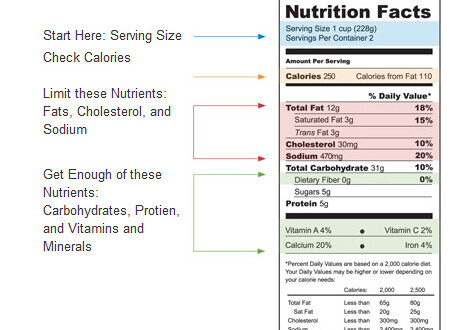The glycemic index of a food is determined by the impact on a 2-hour blood glucose response curve (AUC) following the ingestion of a fixed amount of carbohydrate (usually 50 grams of carbs). The AUC of the test food is divided by the AUC of the standard (either glucose or sometimes white bread with an actual GI index of 100) and multiplied by 100.
In the past, white bread was sometimes used as a reference food (if white bread = 100, then glucose = 140). For people whose carbohydrate source is white bread, this had the advantage of conveying directly whether replacement of the dietary staple with a different food would result in faster or slower blood glucose response.
The disadvantages with this system were that the reference food was not well-defined, and the GI scale was culture dependent.
The average GI value is calculated from data collected in 10 human subjects. Both the standard and test food must contain an equal amount of available carbohydrate. The result gives a relative ranking for each tested food:
- Carbohydrates that break down rapidly during digestion have the highest glycemic indices.
- An increased blood glucose response occurs very quickly. Carbohydrates that break down slowly, releasing glucose gradually into the blood stream, have a low glycemic index (think “slow” rhymes with “low”).
A lower glycemic index suggests slower rates of digestion and absorption of the sugars and starches in the foods and may also indicate greater extraction from the liver and periphery of the products of carbohydrate digestion. Additionally, a lower glycemic response equates to a lower insulin demand, better long-term blood glucose control, and a reduction in blood lipids. All of which are of benefit to to persons with insulin resistant metabolic disorders including polycystic ovarian syndrome (PCOS) thyroid disorders, and type 2 diabetes.
GI values for different foods are calculated by comparing measurements of their effect on blood glucose with an equal carbohydrate portion of a reference food. The current scientific validated methods use glucose as the reference food. Glucose has a glycemic index value of 100. This has the advantages in that it is universal and it results in maximum GI values of approximately 100.
Other Things Can Lower The GI Of A Specific Food
The glycemic effect of foods depends on a number of factors such as the type of starch (amylose vs amylopectin), physical entrapment of the starch molecules within the food, fat content of the food and increased acidity of the meal – adding vinegar for example, will lower the GI.
Eating other foods with fat or high in dietary fiber can inhibit absorption of foods, thus lowering the GI. Eating a small amount of peanut butter or cheese with an apple lowers the glycemic action of the fruit.
Unrefined breads with higher amounts of fiber generally have a lower GI value than white breads but, while adding butter or oil will lower the GI of bread, the GI ranking does not change. That is, with or without additions, there is still a higher blood glucose curve after white bread than after a low GI bread such as pumpernickel.
The glycemic index can only be applied to foods with a reasonable carbohydrate content, as the test relies on subjects consuming enough of the test food to yield about 50 grams of available carbohydrate. High fat or high protein foods such as meat, eggs, nuts and cheese have a negligible GI. Furthermore, because many fruits and vegetables (but not potatoes) contain very little carbohydrate per serving, they have very low GI values and are regarded as “free” foods. This also applies to carrots, which were originally and incorrectly reported as having a high GI.
Alcohol
Alcoholic beverages have been reported to have low GI values, however it should be noted that beer has a moderate GI. Recent studies have shown that the consumption of an alcoholic drink prior to a meal reduces the GI of the meal by approximately 15 percent. Alcohol consumption can also affect blood sugar in people with pre-diabetes and all forms of diabetes and should be avoided or only consumed in moderation.
Glycemic Index of Foods
GI values can be interpreted intuitively as percentages on an absolute scale and are commonly interpreted as follows:
- Low GI: Less than 55
- Intermediate GI: Between 56 and 69
- High GI: Greater than 70
A low GI food will release energy slowly and steadily and is appropriate for dieters and endurance athletes.
A high GI food will provide a rapid rise in blood sugar levels and is suitable for post-endurance exercise energy recovery.




